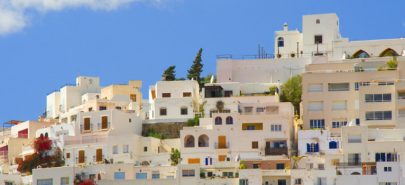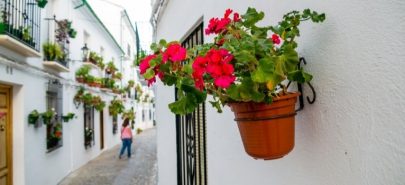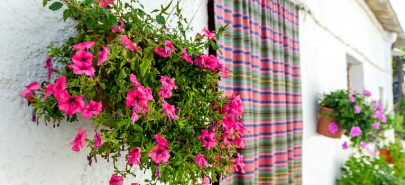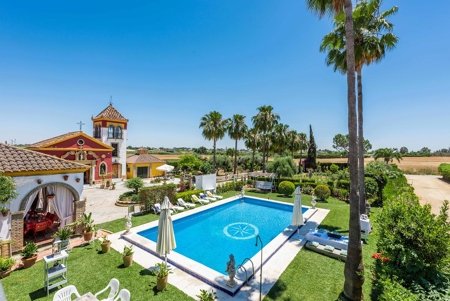Osuna is one of Seville province’s quaintest towns. You can take a look at what to see in Osuna and enjoy this area of Andalucia.
The gorgeous town of Osuna, populated by 18.000 inhabitants, is blessed with Baroque mansions and 16th-to-18th-century churches. Expect yourself to fall in love with this picturesque town and the overwhelming atmosphere, as you get lost in its narrow quaint streets.
Make sure you spend some time walking along calle San Pedro, declared as one of Spain’s most beautiful streets by the UNESCO. And if you’re a fan of the hit American TV series Game of Thrones, visiting Osuna is one of the easiest ways to feel like the Mother of Dragons or Tyrion Lannister.
Legend has it that Osuna is named after the bears that used to populate this area back in the Roman times (“oso” means “bear” in Spanish). This seems to be confirmed by the badge of the city, which displays the Goddess of Wisdom and two bears tied to a tower.
How to get to Osuna
Osuna lies 91 km southeast of Seville, and it is flanked by the highway A92 that connects Granada with Andalucia’s capital city.
Therefore, you can easily reach this town by car, by taking the A92. If you’re coming from Seville, take the exit n. 80 from Seville; otherwise, you should take exit n. 82.
If you’re not a fan of driving in Andalucia, or you just want to relax during your trip, you can take the ALSA bus from Malaga (2 hours and a half for €11) and Granada (between 2 and 3 hours for €15).
Seville is also connected with Osuna via train (Renfe provides this service for €11 and a 1-hour journey) and bus, whose service is provided by the company Autocares Valenzuela, granting daily, 80-minute trips between the city and Osuna.
Osuna and GOT
Osuna has reached the peak of its fame when the world-famous TV drama series Game of Thrones announced in 2014 that some scenes of the 5th season would be filmed in some cities of Spain, including Osuna and Seville. Before, during and after the filming, Osuna became the destination of GOT fans, who wanted to live like their favourite TV series’s characters for a while and meet their beloved actors.
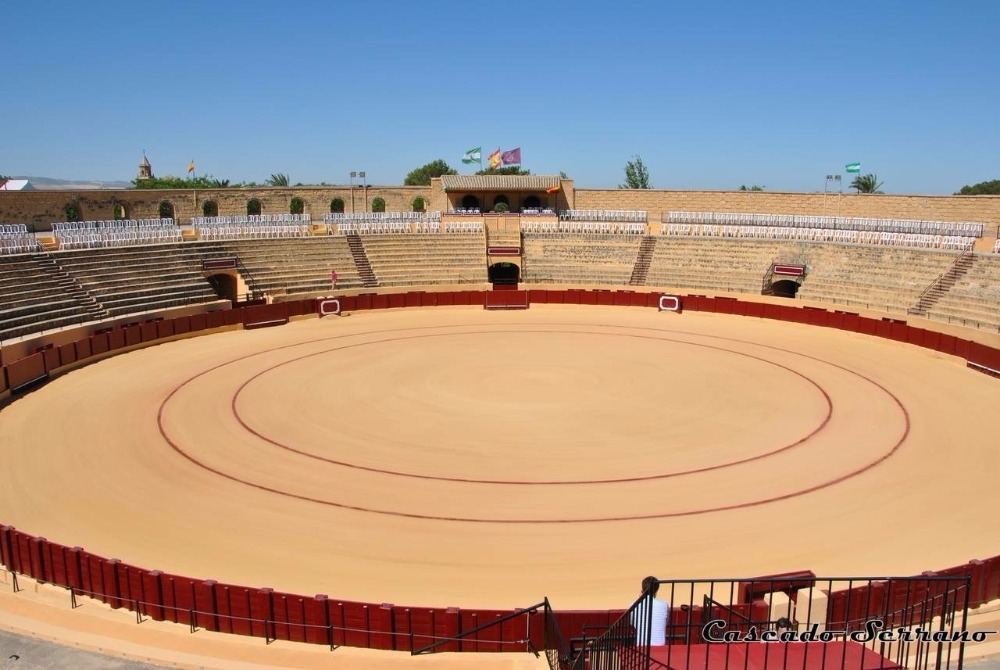
The production also asked for extras during the filming, receiving an overwhelming response. For the 500 available places, 86.000 people showed up. Osuna specifically welcomed the filming of the 9th episode’s battle scene in its 1904 bullring, whose 48-metre arena is one of the Seville’s Expo 29 architect Anibal Gonzalez’s masterpiece. The episode, called The Dance of Dragons, aired in June 2015 and it was seen by 7.14 million American viewers during its first airing.
As one can expect, restaurants and bars throughout the town made the most of this fame peak. They created a Game of Thrones menu, shared the visit of the cast on the social networks, and the Museum of Osuna even adapted two rooms for a Game of Thrones-related exhibition, displaying how the town lived during the 17-day filming. The rooms are symbolically called “Salón de Hielo y Fuego” (Ice and Fire Hall), which recalls the name of the literary saga “A Song of Ice and Fire” that inspired the successful TV series.
Address: 37, calle (street) Sevilla
- Year round:
- Tuesday to Sunday: 10 am – 2 pm, and 5 pm – 8 pm
- Monday: closed
- Sunday (June and September): closed
- July and August:
- Tuesday to Friday: 9.30 am – 2.30 pm
- Thursday: 9.30 am – 2.30 pm, and 7 pm – 9 pm
- Monday and Sunday: closed
- General ticket: €2
- Groups of 20+ people: €1.50/person
- Groups of 50+ people: €1/person
- on Wednesday: free
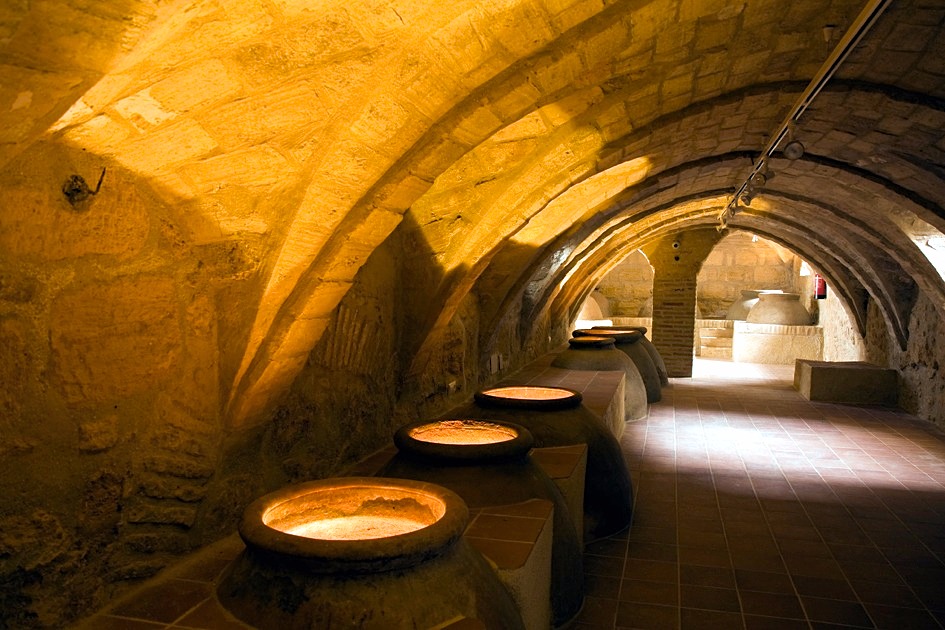
What to see in Osuna
Apart from the already mentioned Museum of Osuna, the town welcomes many other Renaissance and Baroque palaces and buildings, whose construction was encouraged by one of Spain’s wealthiest and most important families, the Dukes of Osuna. Meander through Osuna’s hideouts and find out what to see in town. Climb up the many hills that surround the town and enjoy the spectacular views offered.
Colegiata de Santa María de la Asunción
This church lies on a hilltop in the town of Osuna and it was built on the ancient parish church of El Castillo, which was built slightly after the Catholic Reconquest took the city in 1239.
The Renaissance style of the Colegiata became one of Osuna’s landmarks during the 16th century and has been a Bien de Interés Cultural since 1931. The unadorned façade, which reminds of a fortress, hides a rich treasure behind the Sun Door, or Puerta del Sol as the entrance door is also known. Before entering, don’t miss out on the views you can enjoy from the terrace; the town is at your feet.
Its halls contain treasures belonging to the Dukes of Osuna, thus including a few of Spanish painter José Ribera’s masterpieces, commissioned precisely for this Church. The 1548 sepulchre welcomes the family vault of the Dukes of Osuna, where their tombs are located. As a curiosity, know that this area is considered to be the world’s smallest miniature cathedral.
Address: Plaza de la Encarnación
- October to April:
- Tuesday to Sunday: 10 am – 1.30 pm, and 3.30 pm – 6.30 pm
- May to September:
- Tuesday to Sunday: 10 am – 1.30 pm, and 4 pm – 7 pm
- Sundays in July and August: closed
Price (only accessible with a guided tour): €2
Monasterio de la Encarnación
Another of the buildings, whose construction was promoted by the Duke of Osuna, started off as a hospital (Hospital de la Encarnación del Hijo de Dios, which means the Hospital of the Incarnation of God’s Son). It was turned into a monastery in 1626 and it passed into the hands of the nuns of the Royal and Military Order of La Merced.
Nowadays, this former monastery welcomes Osuna’s Museum of Religious Arts. It houses Baroque sculptures of Child Jesus and a patio, surrounded by tiled walls depicting Biblical scenes, the five senses, the four seasons, praying nuns, and bullfighting scenes.
The four halls of the museums can be visited only on a guided tour with one of the nuns of the monastery. If you need another reason to go for it, know that at the end of the visit, you can buy some delicious homemade sweets.
Address: Plaza de la Encarnación
- September to June:
- Tuesday to Sunday: 10 am – 2.30 pm, and 4 pm – 6 pm
- Monday: closed
- July and August:
- Tuesday to Sunday: 9.30 am – 2.30 pm, and 7 pm – 9 pm
- Monday: closed
- Sundays in July, August and September: closed in the afternoon
Price: €4
Osuna’s University of Purísima Concepción
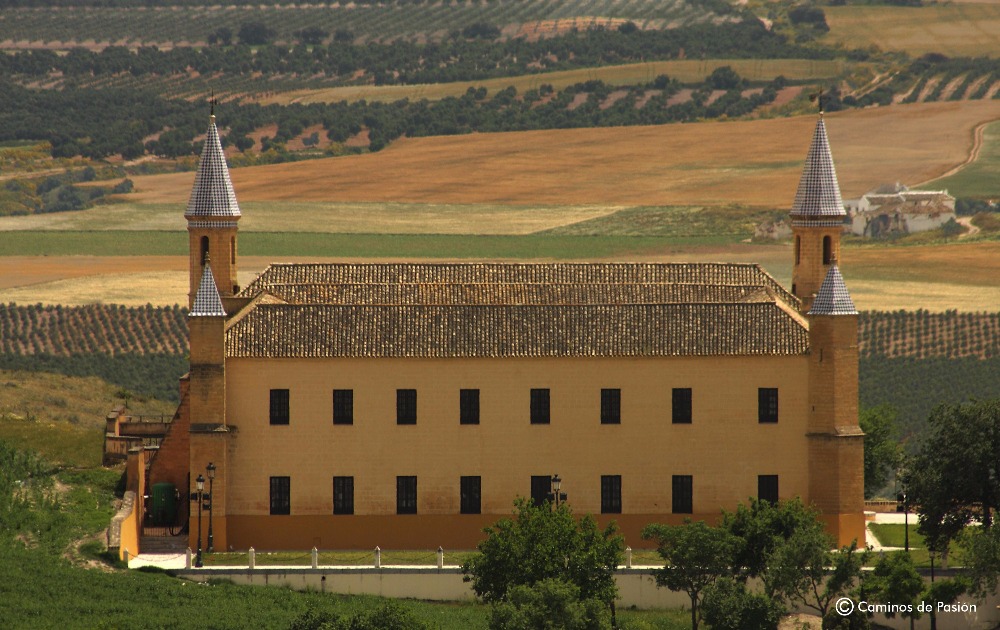
The University was founded after Pope Paul III’s papal bull in 1548. The building welcomed the faculties of Medicine, Law, Canons and Theology until 1824. After a renovation process, nowadays the four majestic towers located in the four corners of this staggering building enclose the University of Seville’s affiliated centre.
The two-storey patio provides access to the rooms of the university. The building also features a private chapel with 16th-century paintings.
The access to the University is free and can be made during lecture days.
Coto de las Canteras
However, Osuna’s most striking feature is not a building. The staggering Coto de las Canteras is, in fact, an archaeological site eroded by Nature and modelled by mankind since the 5th century BC. Here is where the stone was extracted from the interior of a hillock, this creating a cave that nowadays is used as a museum, celebration centre and even as an auditorium.
The Coto de las Canteras is located 15 minutes on foot from Osuna, on the hill of La Cantera, the town’s highest point. Guided visits are available.
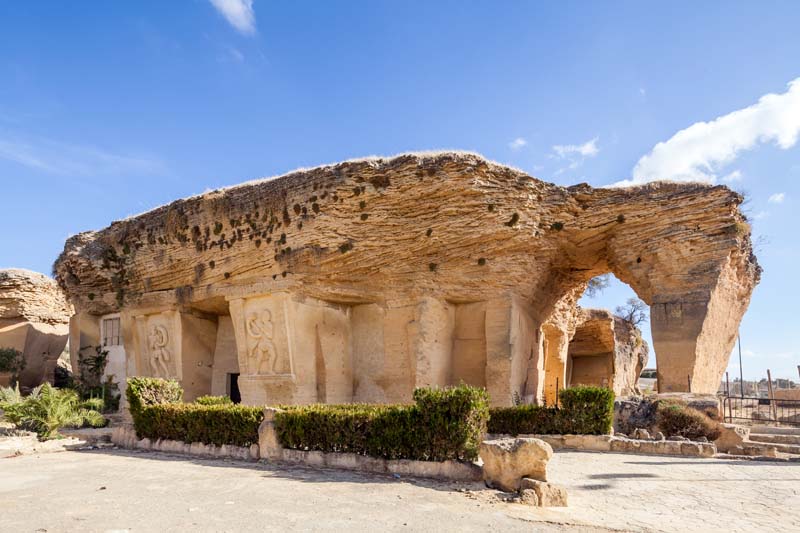
- Monday to Friday: 10 am – 1 pm
- Saturday and Sunday: 10 am – 2 pm
Tourist office of Osuna

Address: 37, calle Sevilla
Tuesday to Saturday: from 10 am to 2 pm, and from 6 pm to 9 pm
Sunday: from 10 am to 2 pm
Monday: closed
Places to stay in Osuna
Osuna’s surrounding area features various villas and holiday homes that you can’t miss out on. They are provided with all kinds of facilities and some also have gorgeous views of the Sevillan countryside. Check them all by clicking here or on the button below!
You won’t miss a thing thanks to this article about what to see in Osuna.
Have you ever been to this town in Seville province? Are you a GOT fan maybe? We want to know what you think of Osuna; leave a comment below!

